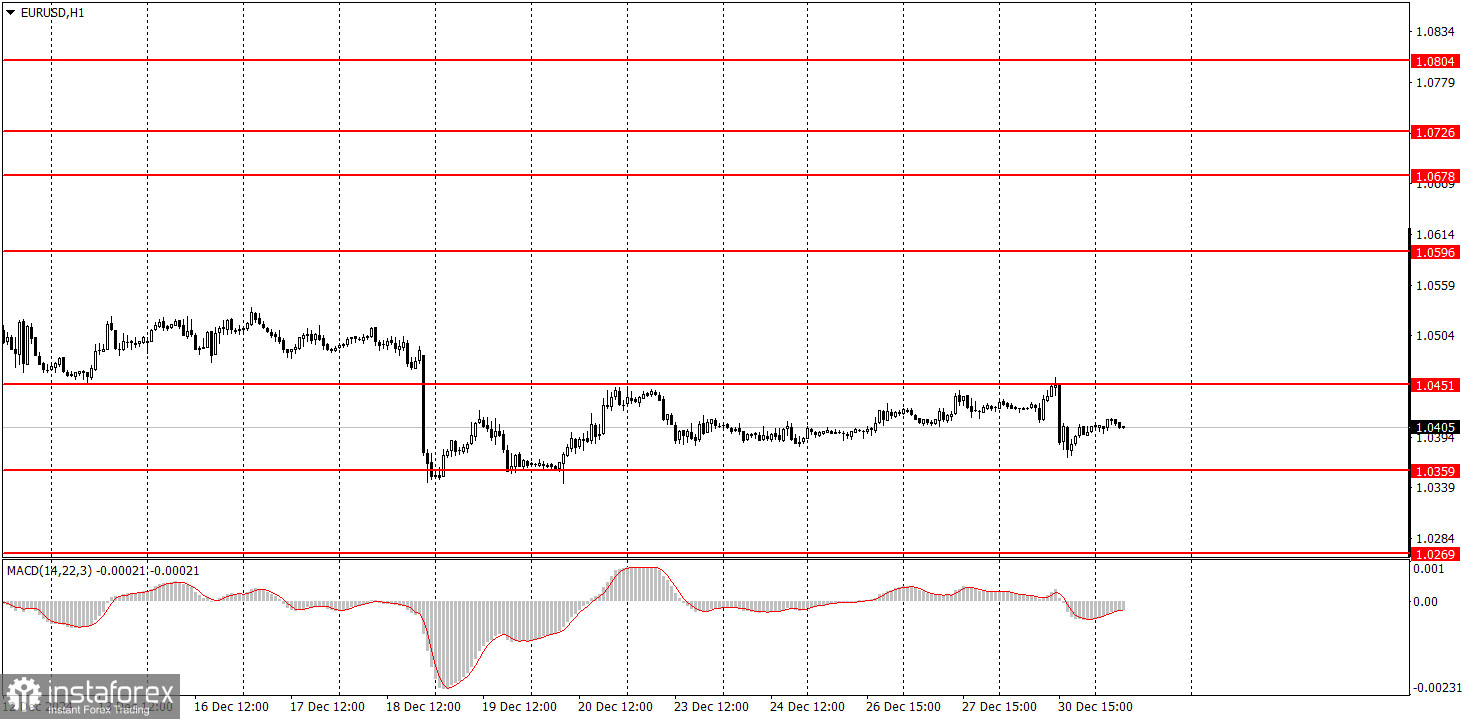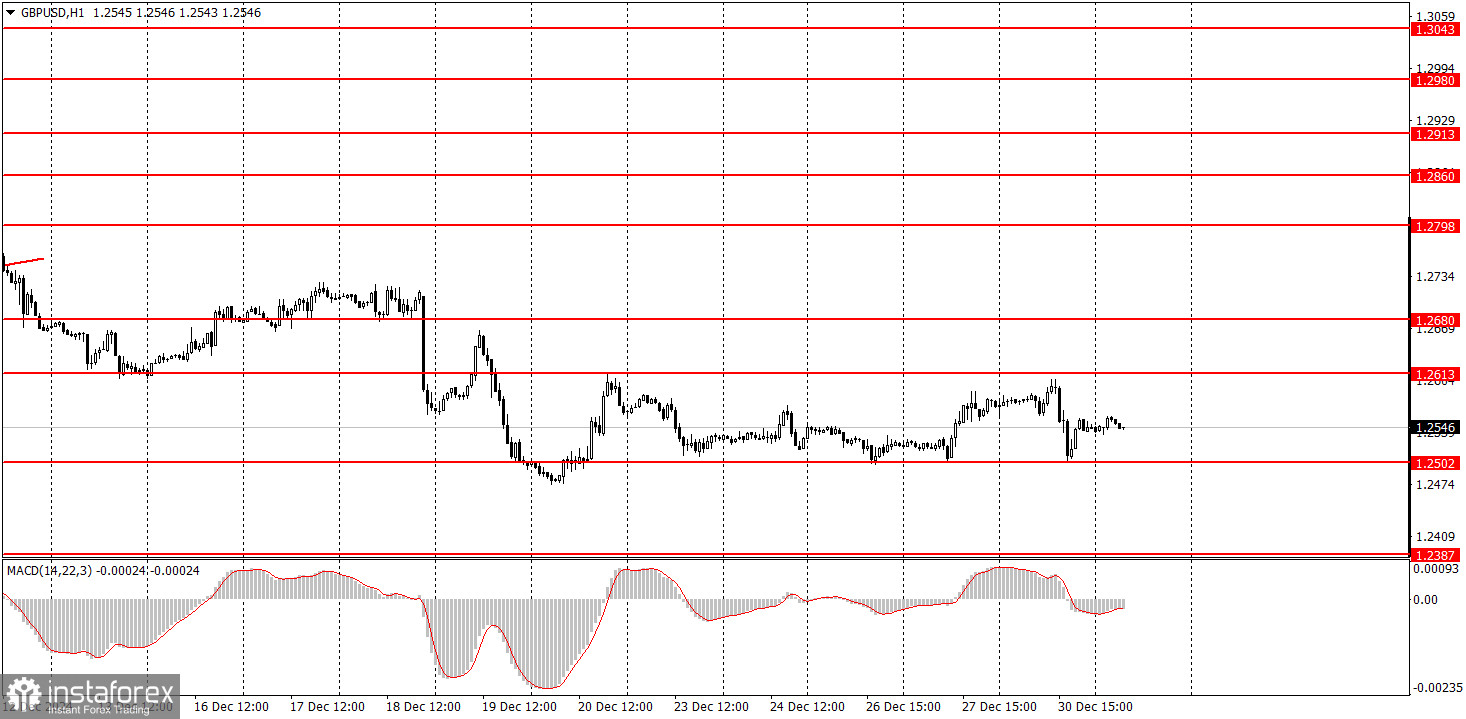Macroeconomic Report Analysis:

Once again, no macroeconomic events are scheduled for Tuesday. In the complete absence of news, it is likely that Tuesday will also witness flat trading. Yesterday's movements in both currency pairs were decent, but these should probably be considered coincidental rather than indicative of any significant trend. The market shows no inclination to open trades ahead of New Year's Eve.
Fundamental Events Analysis:

There is absolutely nothing noteworthy among Tuesday's fundamental events. However, at this time, the market does not need further speeches or comments from central bank representatives regarding monetary policy. The three major meetings were held recently, providing traders with comprehensive insights into the state of the economies and the future actions of central banks. We believe that all three meetings conveyed a singular message to traders: the US dollar is likely to continue strengthening. However, with the current holiday pause in the market, movements and reactions to fundamental factors should be expected only in the new year.
General Conclusions: On the second trading day of the new week, traders will only be able to trade on technical signals, provided they wish to engage in the market during the holiday period. Volatility may be very weak, and the movement direction is likely to remain sideways for both currency pairs. Since the euro and pound reached the lower boundaries of their respective flat channels yesterday, some growth in European currencies may be expected today.
Main Rules of the Trading System:
- Signal Strength: The strength of a signal is determined by the time it takes to form (rebound or breakthrough of a level). The less time it takes, the stronger the signal.
- False Signals: If two or more trades are opened around a level with false signals, all subsequent signals from that level should be ignored.
- Flat Markets: In flat conditions, any pair can generate numerous false signals or none at all. In any case, trading should cease at the first signs of a flat market.
- Trading Hours: Trades should be opened during the European session and manually closed by the middle of the American session.
- MACD Usage: On the hourly timeframe, MACD signals should only be traded with sufficient volatility and a trend confirmed by a trendline or trend channel.
- Close Levels: If two levels are very close to each other (5 to 20 points apart), they should be treated as a support or resistance area.
- Stop Loss: After moving 15–20 points in the right direction, set a Stop Loss to break even.
What's on the Charts:
- Support and Resistance Levels: Targets for opening buy or sell trades, where Take Profit levels can also be set.
- Red Lines: Channels or trendlines that indicate the current trend and show the preferred trading direction.
- MACD Indicator (14,22,3): The histogram and signal line serve as auxiliary tools for generating signals.
- Significant Reports and Speeches: Always listed in the economic calendar, these can significantly impact currency pair movements. It is recommended to trade cautiously or exit the market during such events to avoid sharp price reversals against the preceding trend.
Important Note for Beginners: Not every trade can be profitable. Developing a clear strategy and applying money management principles are the keys to long-term success in trading.
 English
English 
 Русский
Русский Bahasa Indonesia
Bahasa Indonesia Bahasa Malay
Bahasa Malay ไทย
ไทย Español
Español Deutsch
Deutsch Български
Български Français
Français Tiếng Việt
Tiếng Việt 中文
中文 বাংলা
বাংলা हिन्दी
हिन्दी Čeština
Čeština Українська
Українська Română
Română

